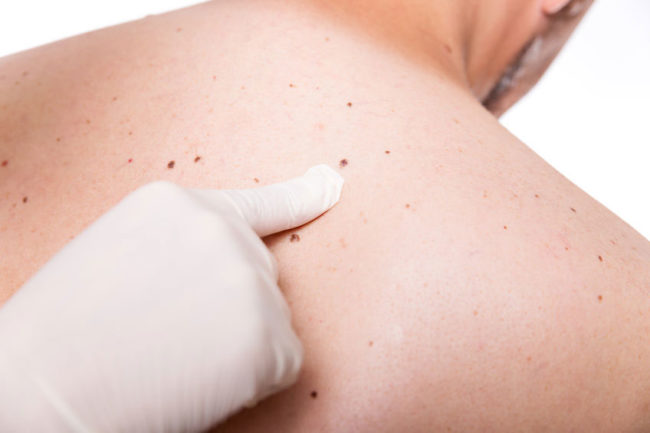How Do I Check Myself For Melanoma?
April 19 2018
Australians are well known for our love of the beach and other outdoorsy activities, but all that time spent in the sun doesn’t come without some associated risks.
Sadly, Australia has the highest incidence of melanoma in the world. On average, 30 Australians will be diagnosed with melanoma every day and more than 1,200 will die from the disease each year.
The first symptom of a melanoma is usually the appearance of a new spot or a change in an existing freckle or mole. The change may be in size, shape or colour and is normally noticed over several weeks or months.
The ABCDE guidelines provide a useful way to monitor your skin and detect the early signs of melanoma. Please note that this is just a guide and melanoma may present with different characteristics. This is why regular skin checks from a professional are so important.
Please seek expert advice if you notice any of the following:
A is for ASYMMETRY:
One-half of a mole or birthmark does not match the other.
B is for BORDER irregularity:
The edges are irregular, ragged, notched, or blurred.
C is for COLOUR variation:
The colour is not the same all over, but may have differing shades of brown or black, sometimes with patches of red, white, or blue.
D is for DIAMETER:
The area is larger than 6 mm (about the size of a pencil eraser) or is growing larger.
E is for EVOLVING:
Changes in size, shape, colour, elevation, or another trait (such as itching, bleeding or crusting).(This last point is likely the strongest of all of the warning signs)
How do I make sure I don’t miss anything?
- Stand in front of a full-length mirror in a well-lit room.
- Start at the top and work your way down your body.
- Begin by using a brush or hairdryer to part your hair into sections so that you can check your scalp.
- Move to your face and neck, not forgetting your ears, nostrils and lips.
- Be sure to check both the top and underneath of your arms. Don’t forget your fingernails.
- As you move down your body don’t forget to check places where the sun doesn’t shine! Melanoma can be found in places that do not have exposed skin.
- Ask a partner or family member to check your scalp and back.
- The best way to monitor changes on your skin is by taking photographs every few months and comparing them to identify any changes. React quickly if you see something growing and/or changing.
Sourced from Melanoma Institute Australia & Huffington Post.
